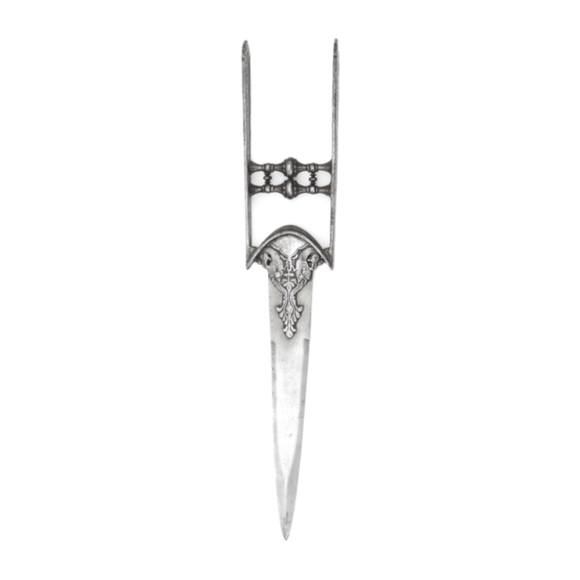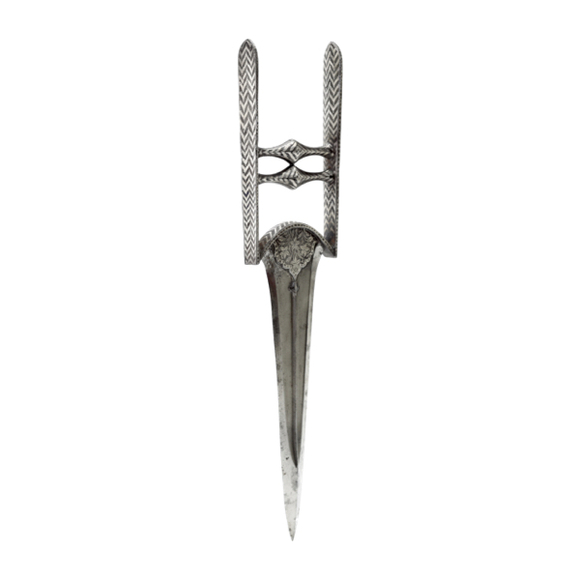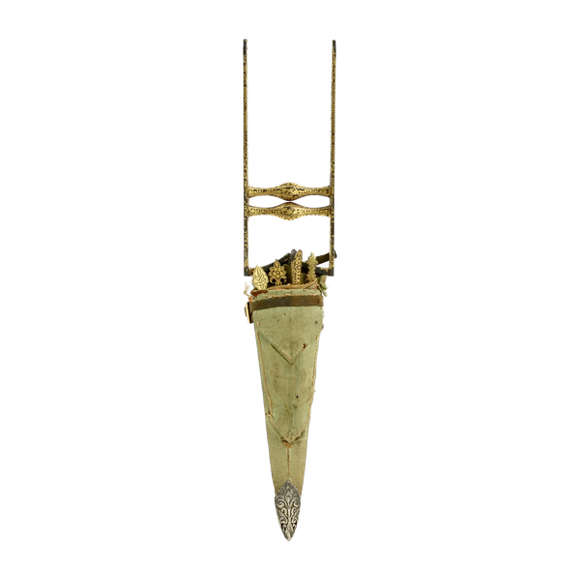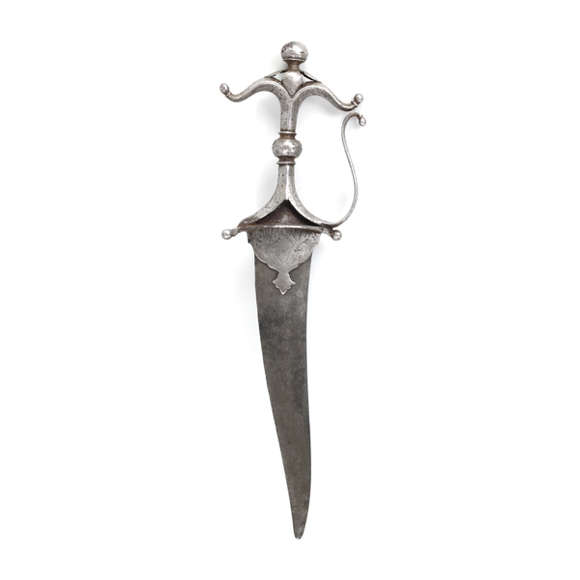Of a style often associated with Tanjore, the seat of the Vijayanagara empire.

42 cm / 16.5 inch
23.5 cm / 9.3 inch
forte 8 mm
middle 7.5 mm
near tip 7.5 mm
forte 67 mm
middle 42 mm
at thickened tip 19 mm
608 grams
Bikanēr, India.
Steel, wootz steel.
17th or 18th century
Description
This all-steel katar has a handle that is of typical southern form, with a cupped base from which the langets project that hold the blade. Other southern features are the gradual widening of the side-bars towards the end and the rather triangular profile of the wide blade.
The blade is hollow ground in two sections, separated by means of a well-defined central ridge. It is of excellent quality high contrast wootz steel reminding of "brilliant black" wootz from Persia. If it is truly Persian wootz, it could be very expensive; Hendley quotes a price of 40 Rupees for a Persian steel katar, where some others he mentions, probably of local Indian steel, cost only 5 Rupees.1 The edge consists of a secondary bevel and is polished bright.
The handlebars are facetted, with a swelling in the middle. Two turban shaped ornaments are held between the bars with an axle, enabling them to spin. It has lots of subtle details in its geometry, like slightly concave sidebars.
It comes with three armory marks in the typical format of the Bikanēr armory.
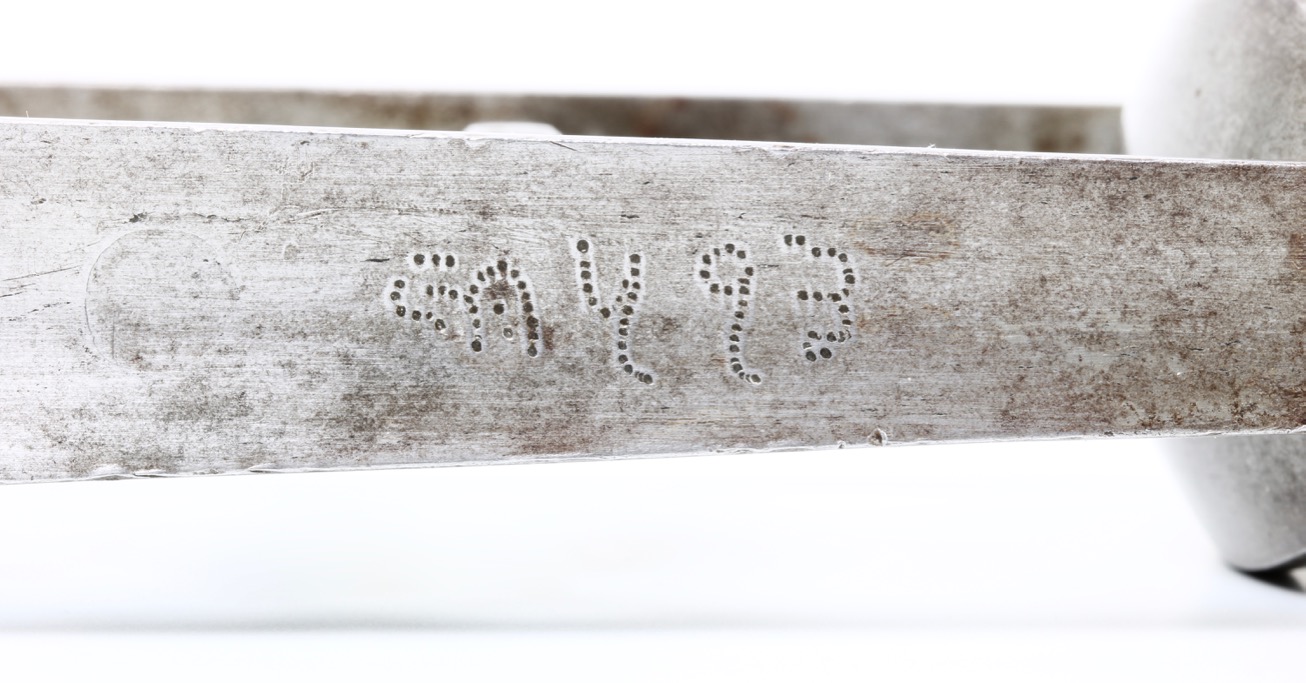
One side-bar is marked "Bi 513"
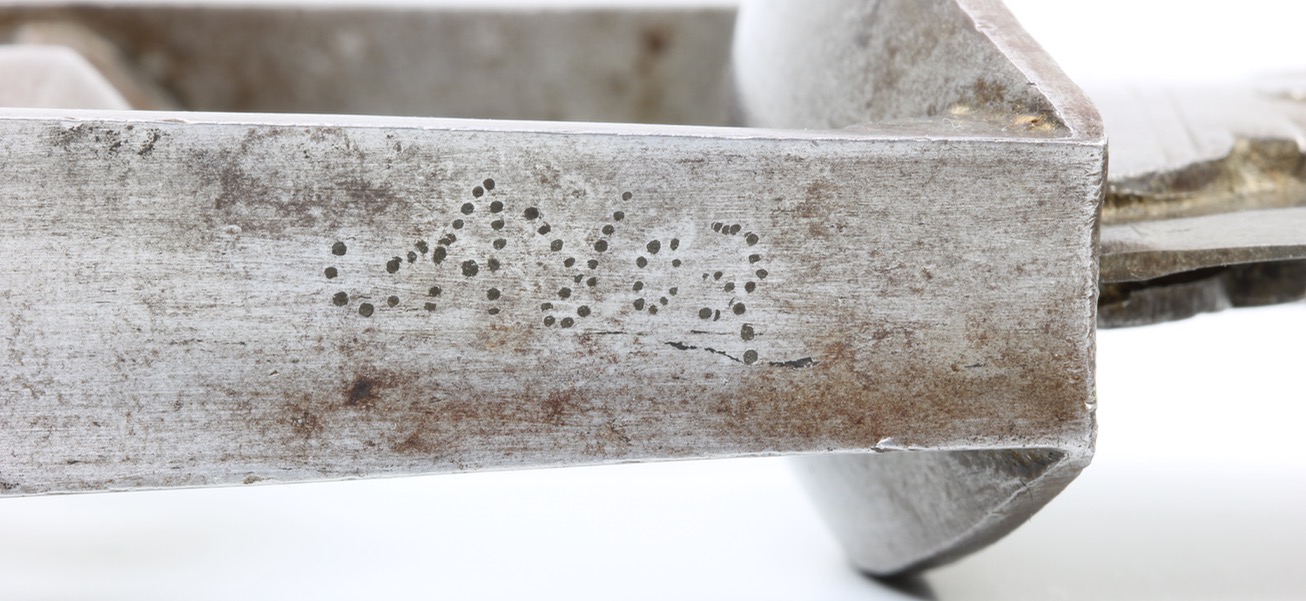
The other side-bar is marked "Bi 402"

One of the langets is marked "368"
If you look carefully you can also see a word on the edge of the cupped base of the handle. It seems to be ना (nā) which, oddly, means "no" or "not".
Conclusion
An impressive, well-made katar from the Bikanēr armory. With its several Deccan features it was probably a bring back from one of Anup Singh's southern campaigns, like many items from this armory. It is fitted with a fine blade of dark wootz, possibly imported steel from Persia.
Notes
1. Thomas Holbein Hendley; Ulwar and its art treasures, London: W. Griggs, 1888. (I'd love to quote a page here but the book as no page numbers.) Also see many mentions of Persian steel on Indian weapons in: Lord Egerton of Tatton; Indian and Oriental Arms and Armour, Dover Publications; Revised edition, 2002. Pages 52-53 for the line drawings, page 133 #678 for the description. About boy's guns he quotes Prince Soltykoff: "Voyage dans l'Inde", page 174.
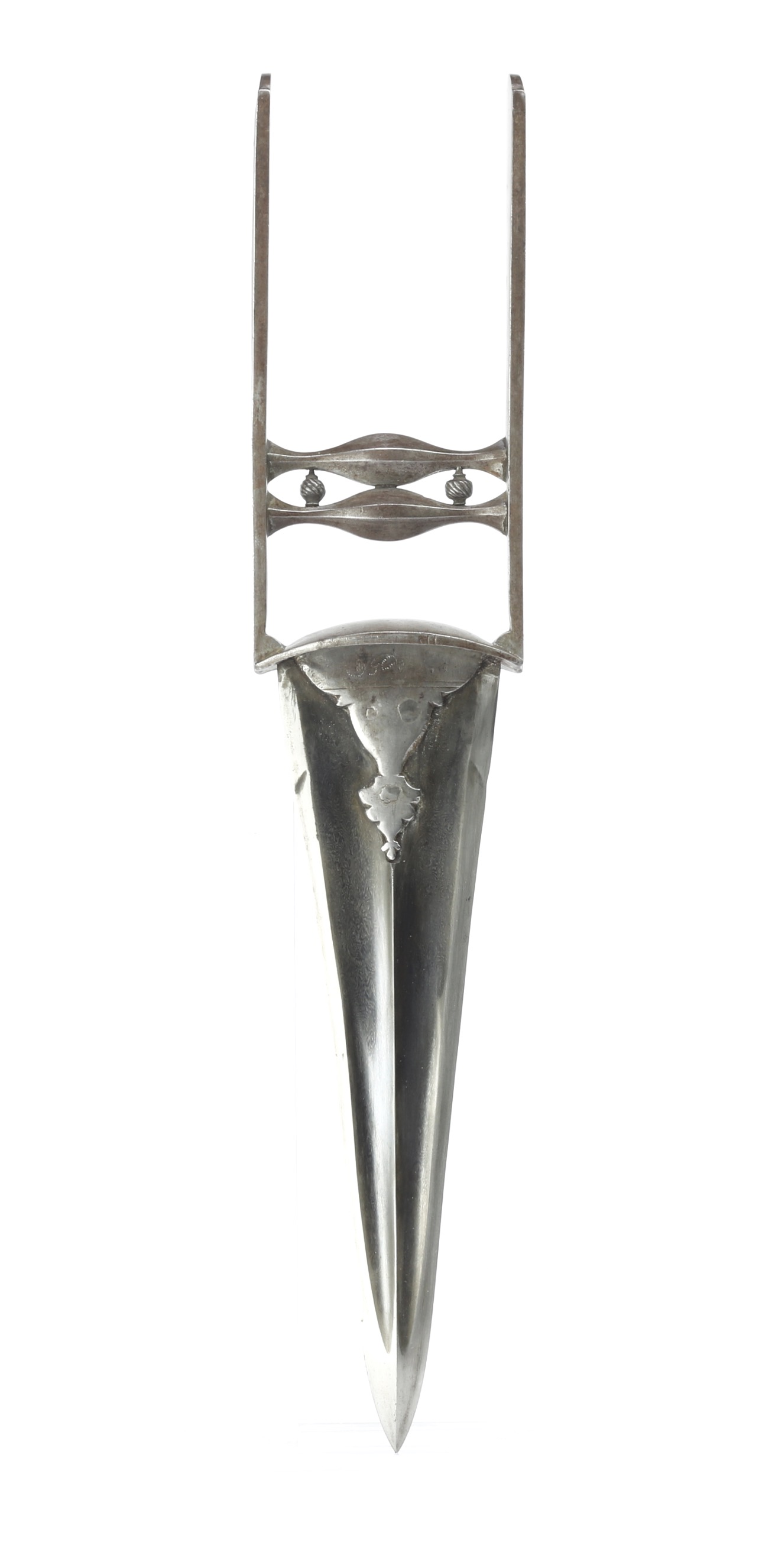
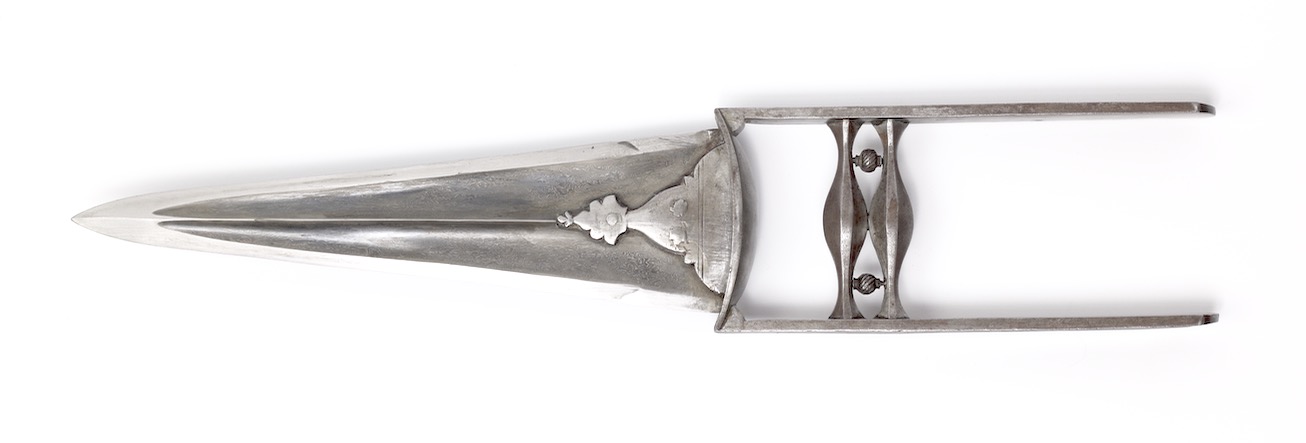
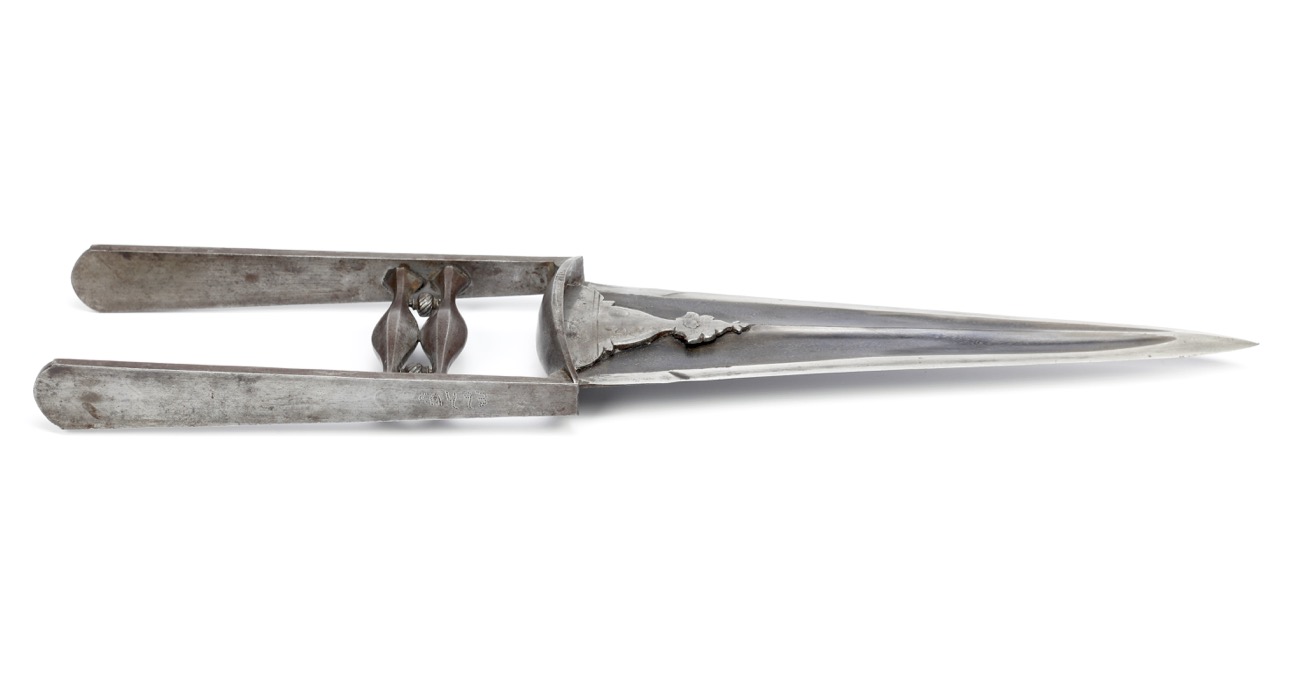

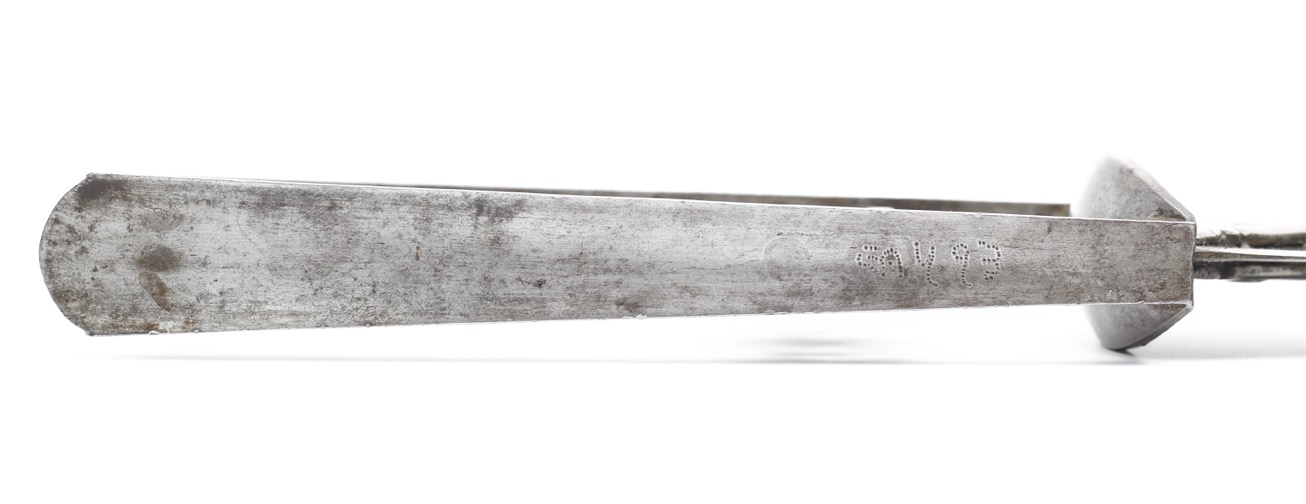
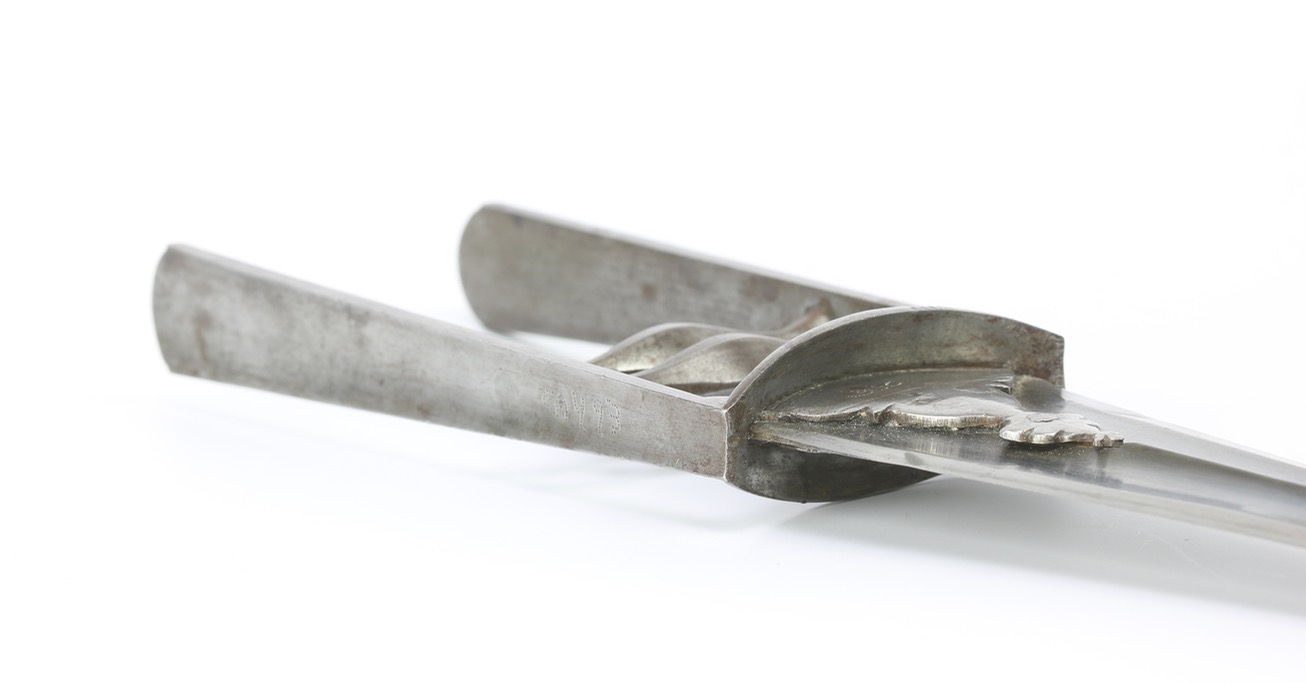
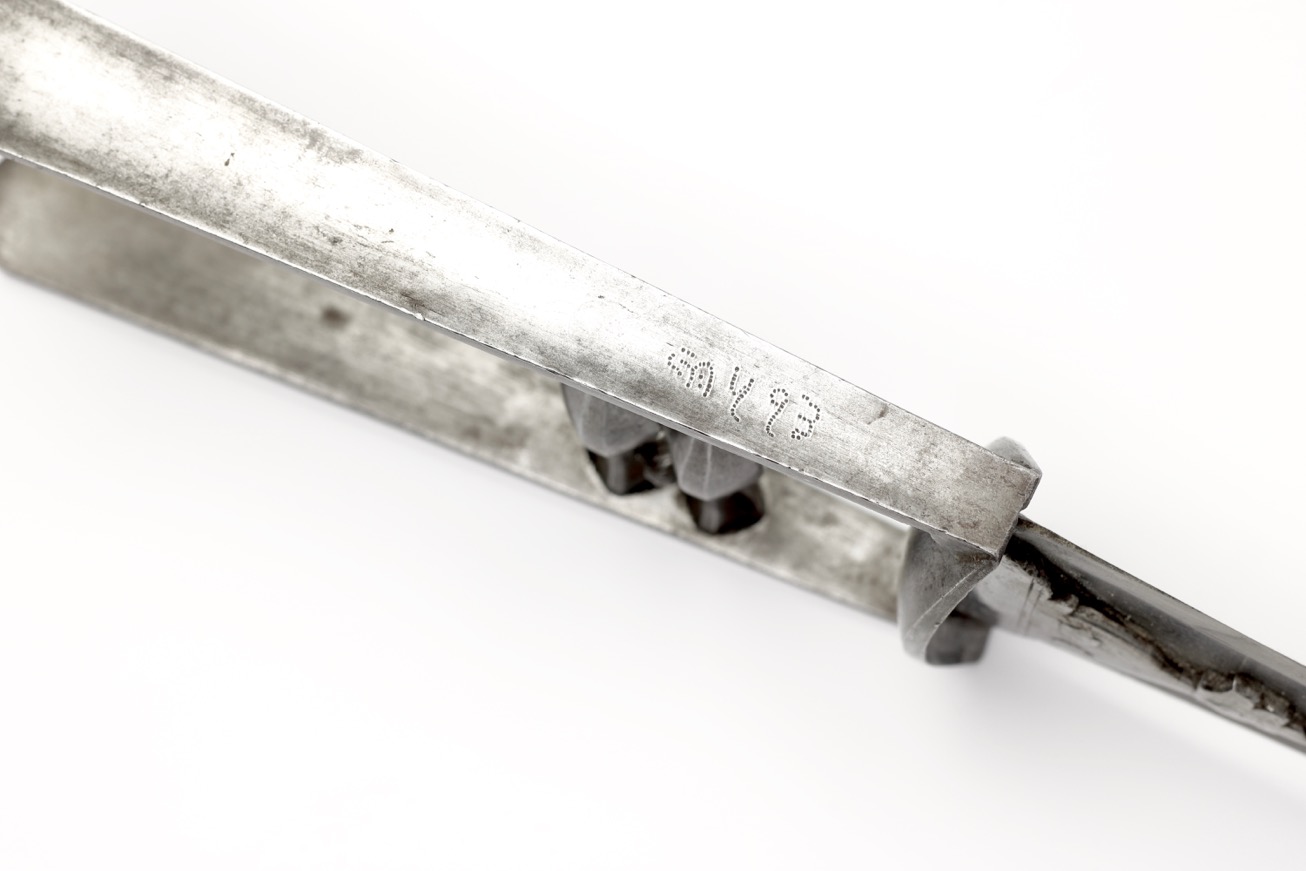
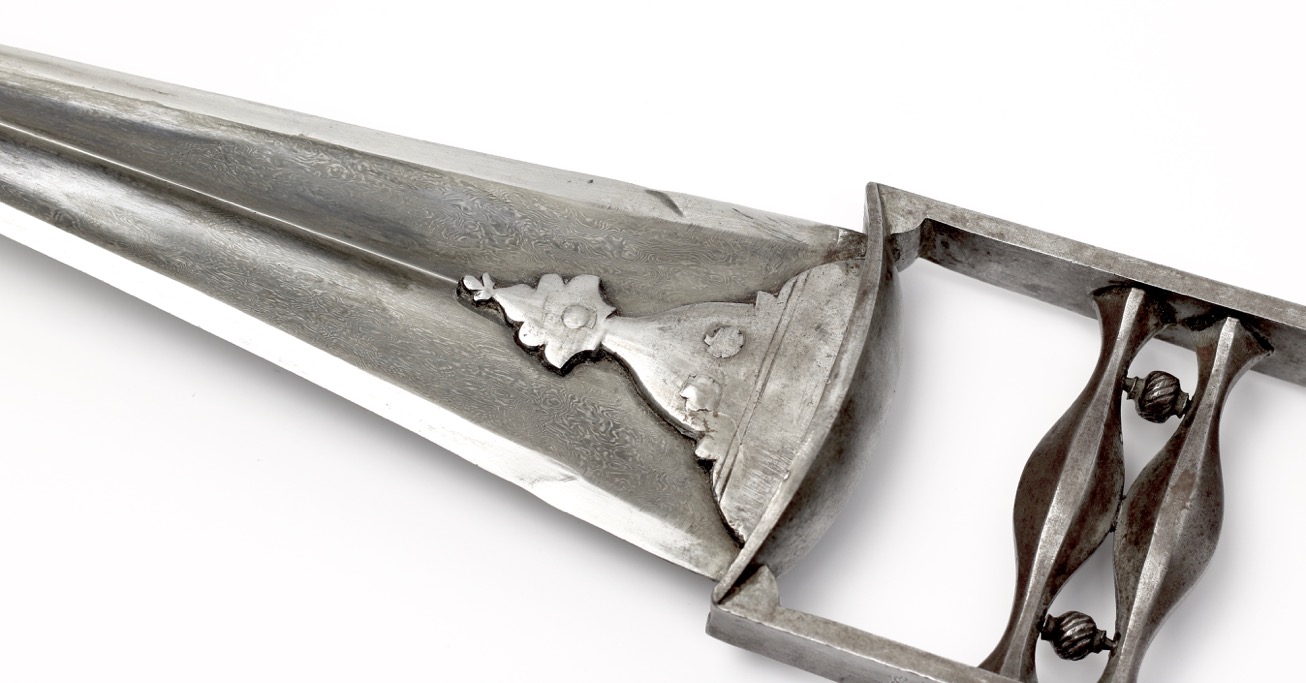
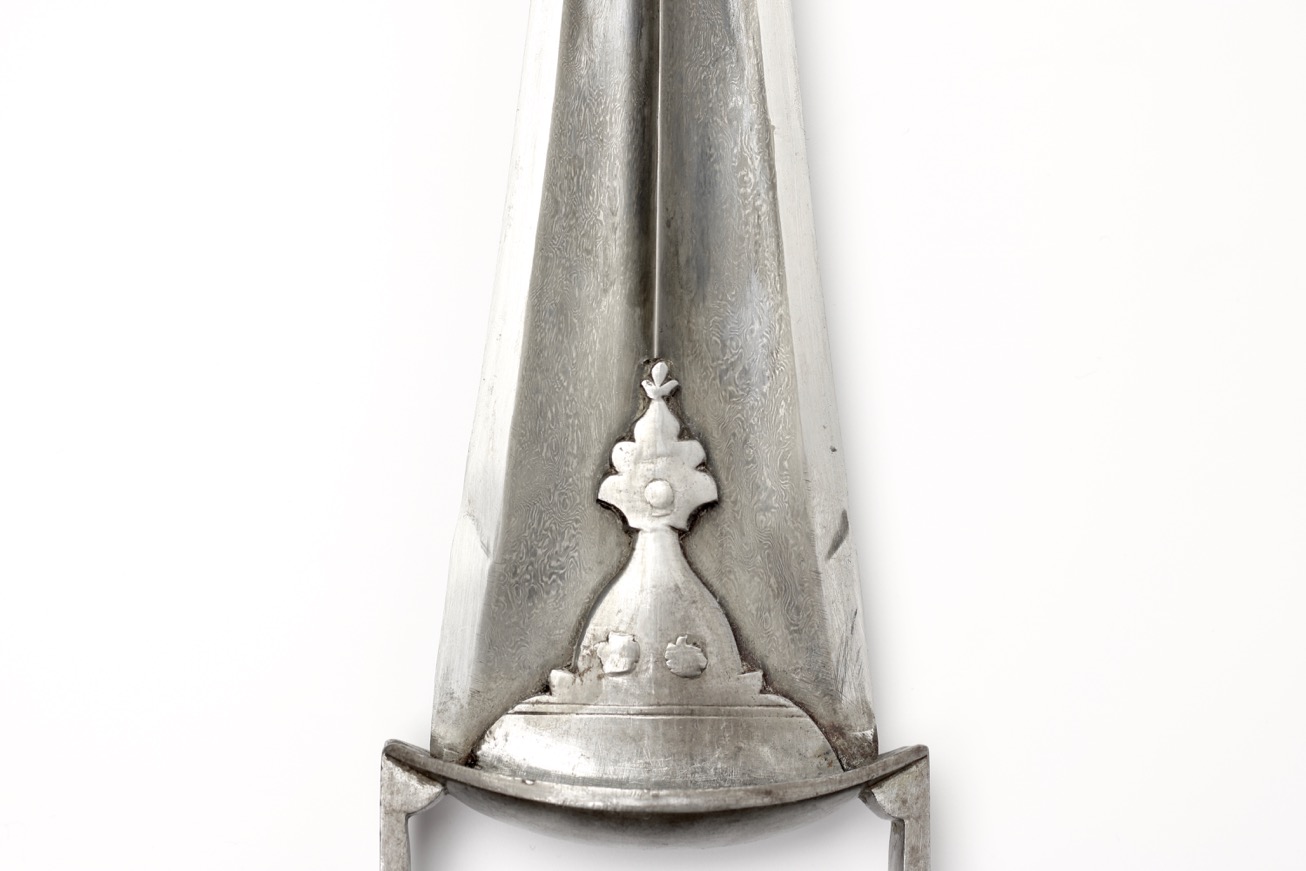
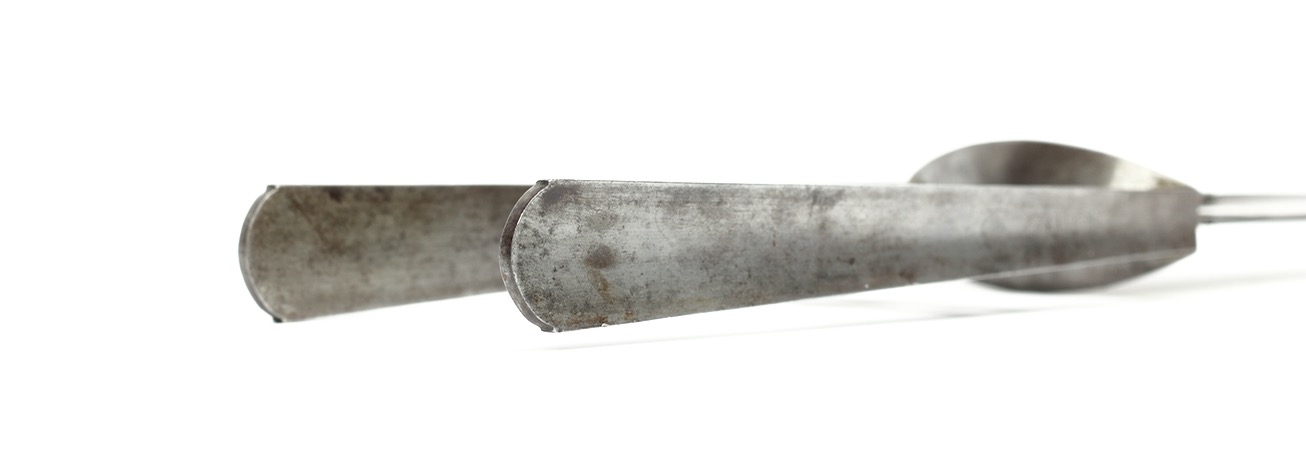
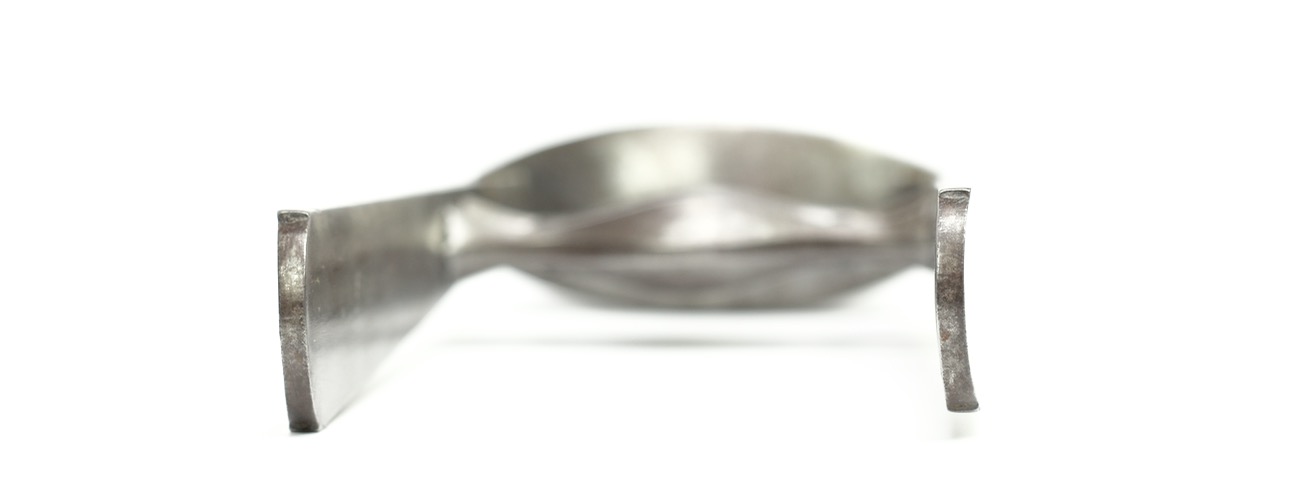
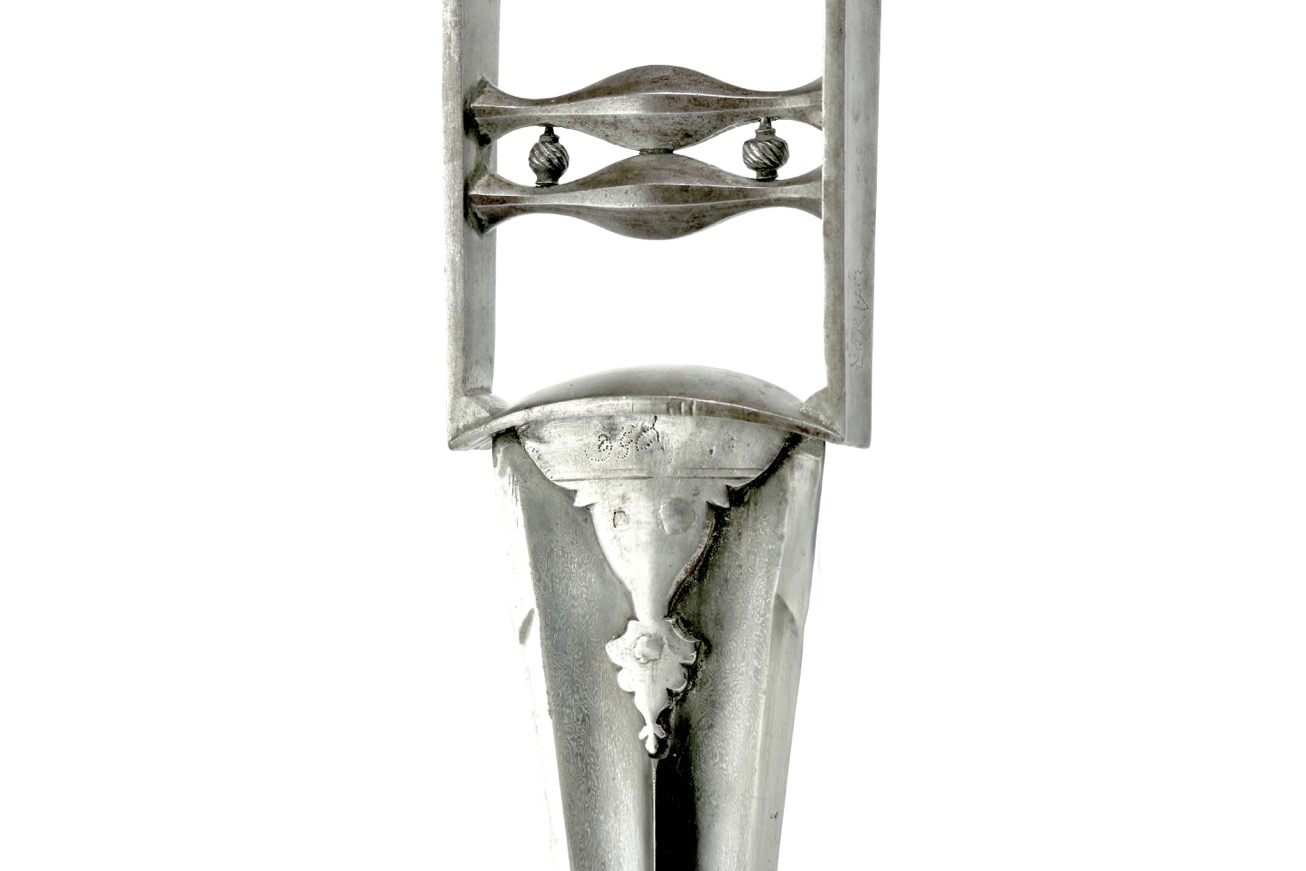
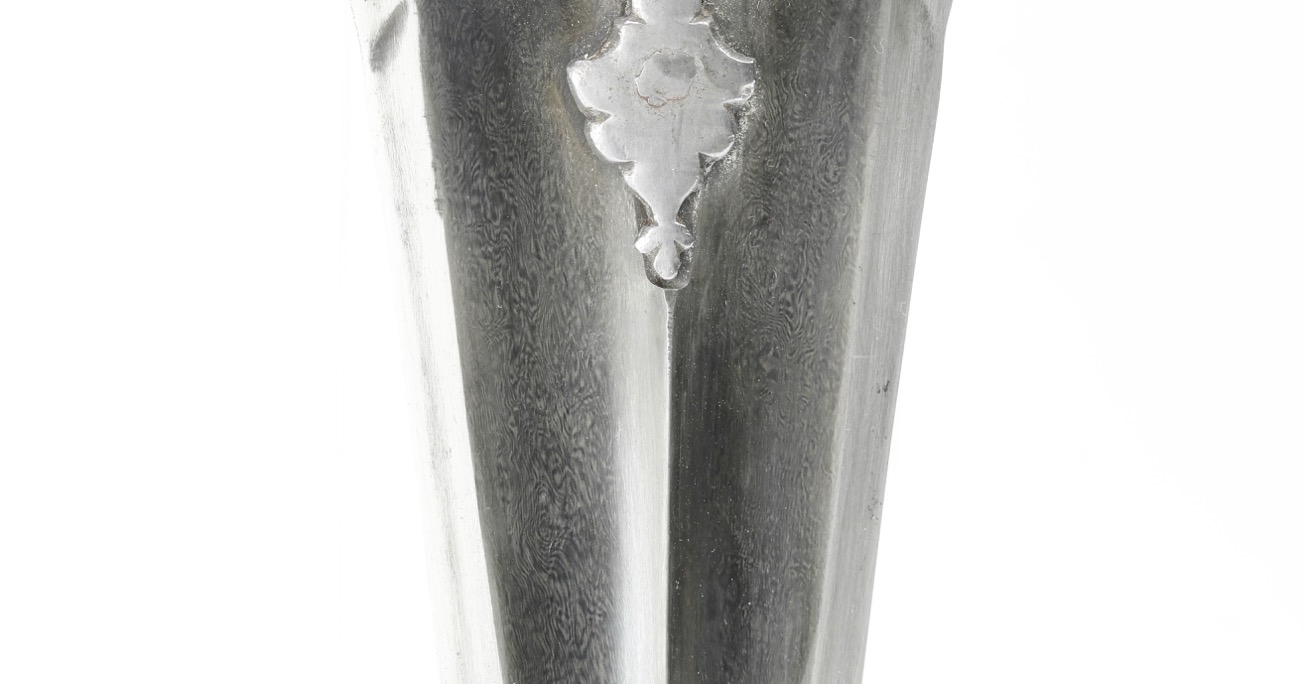
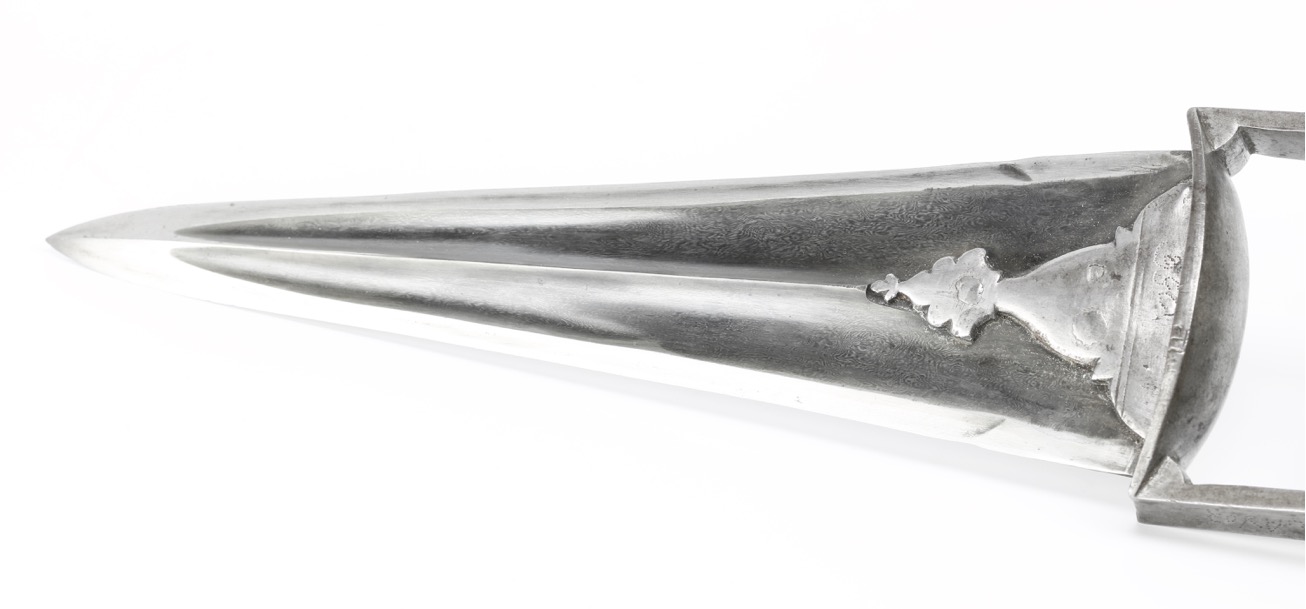
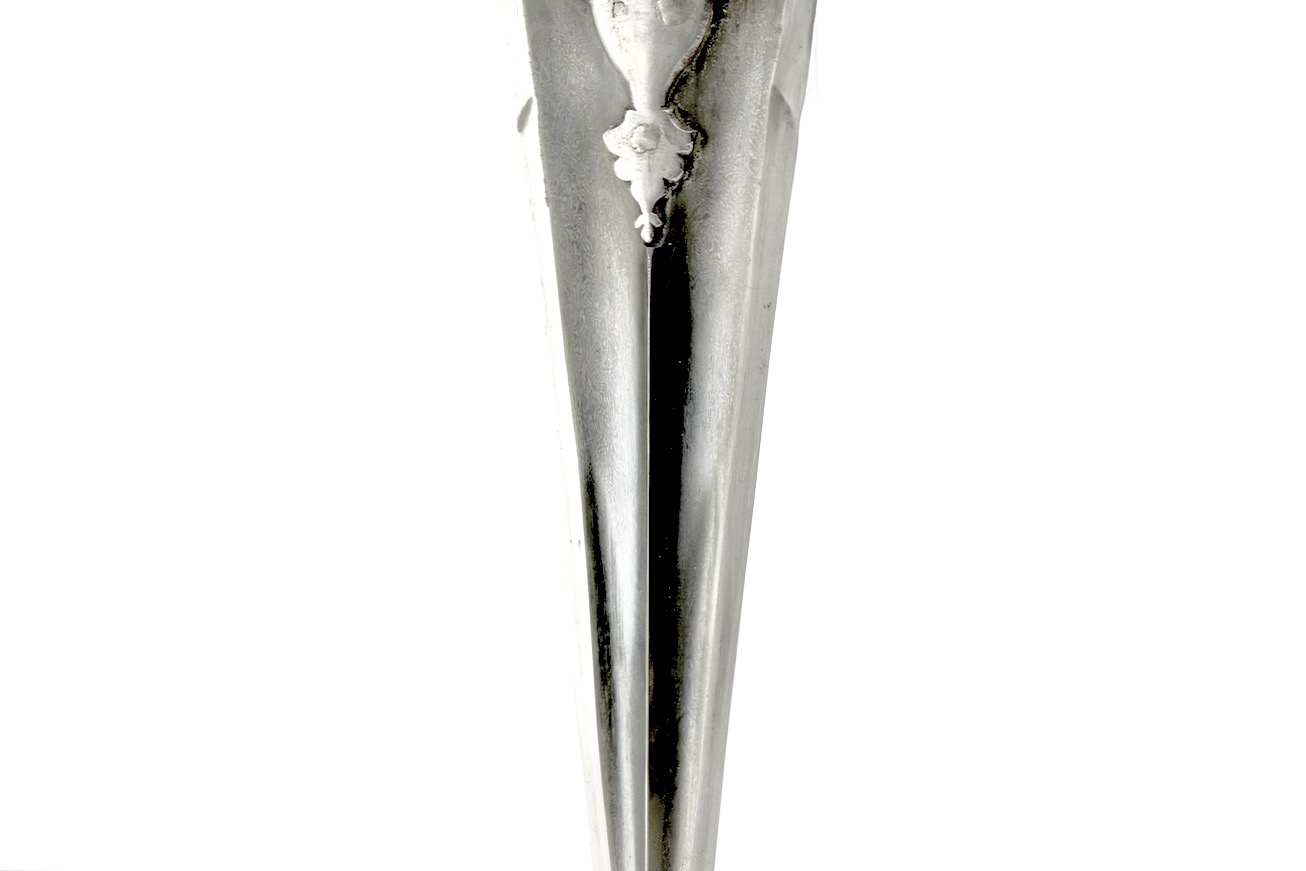
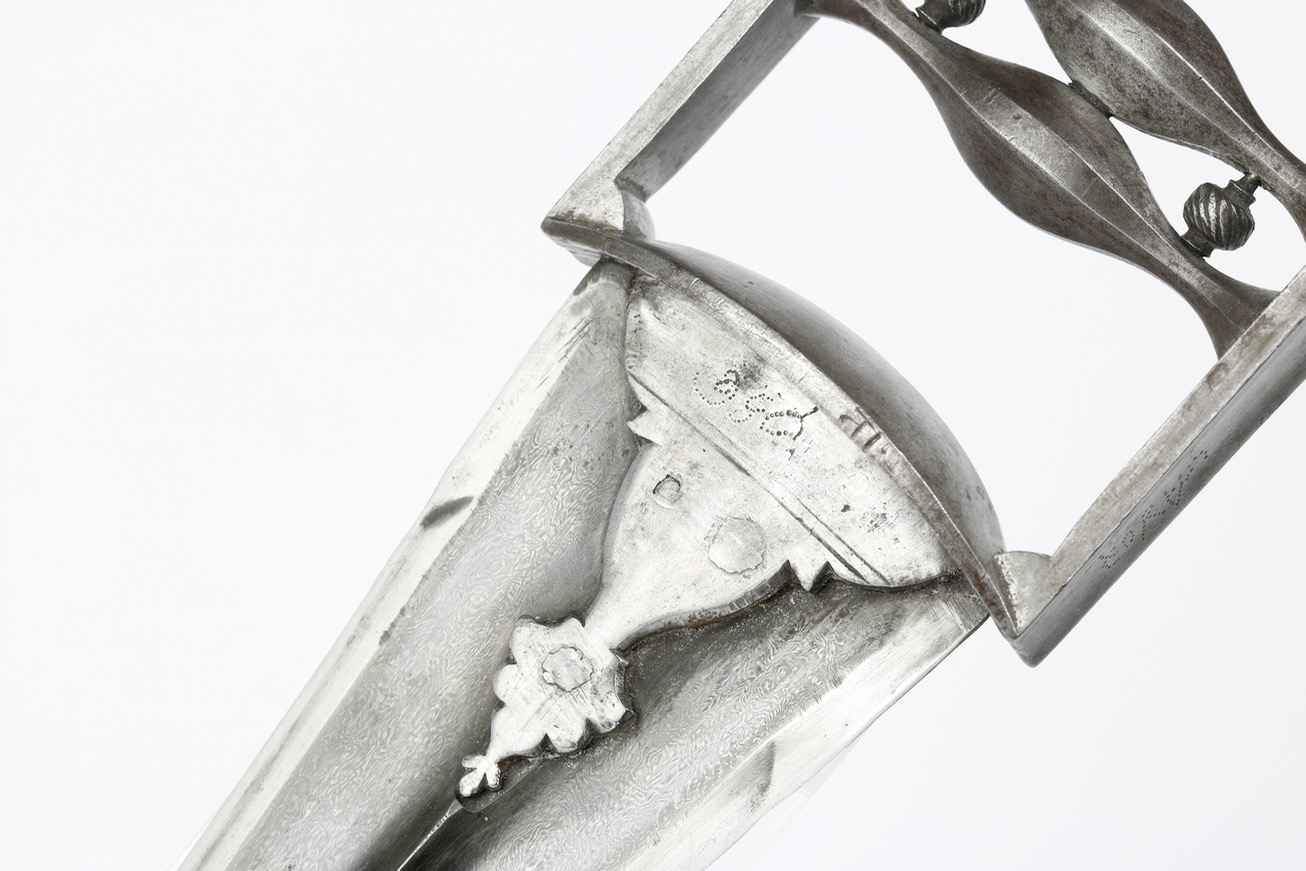
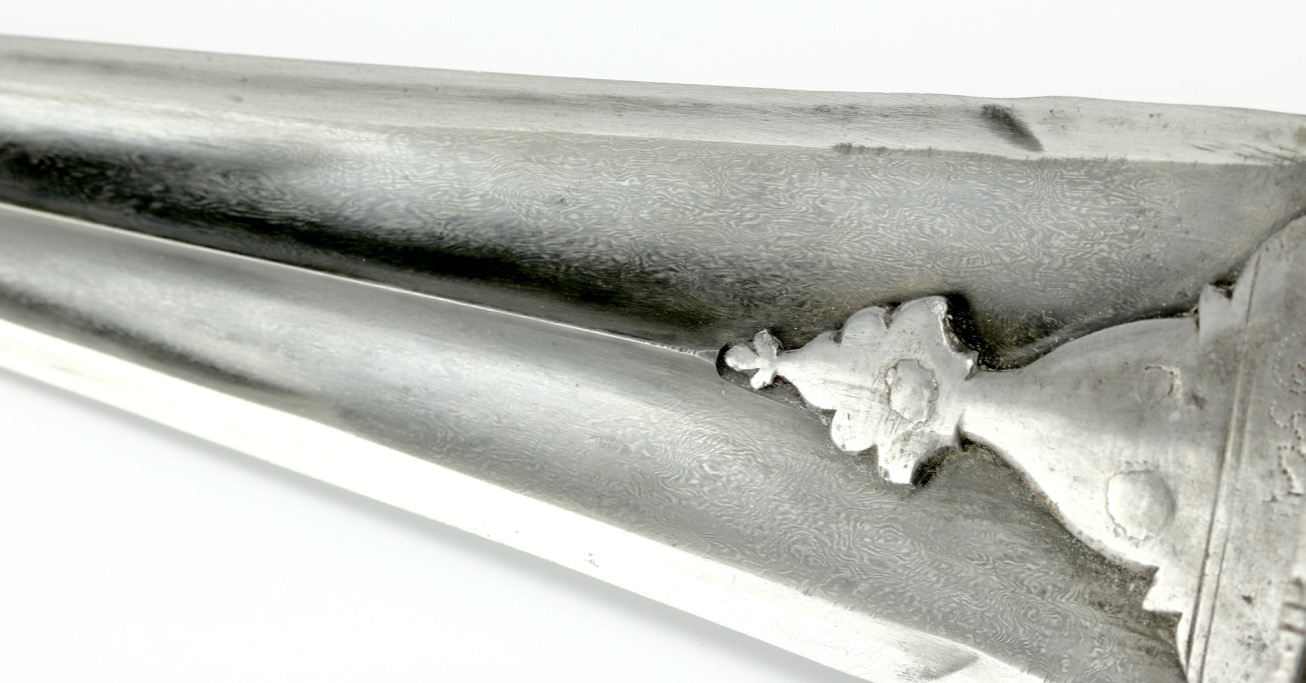
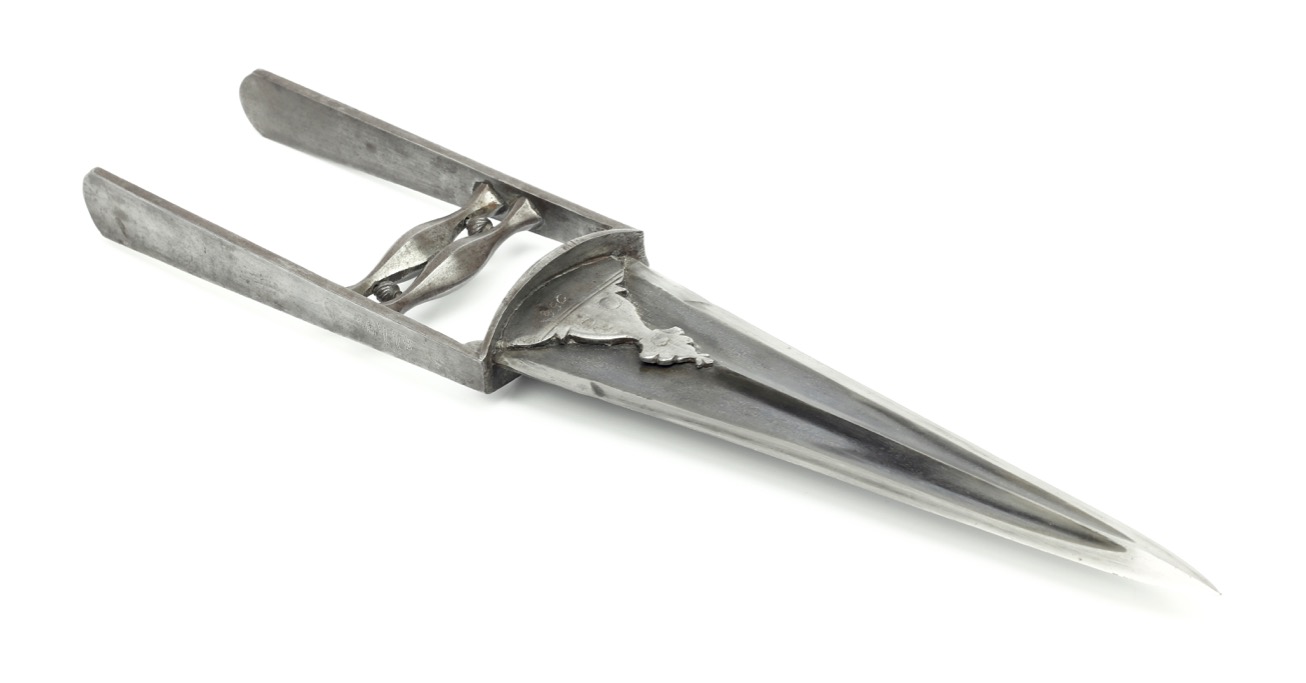
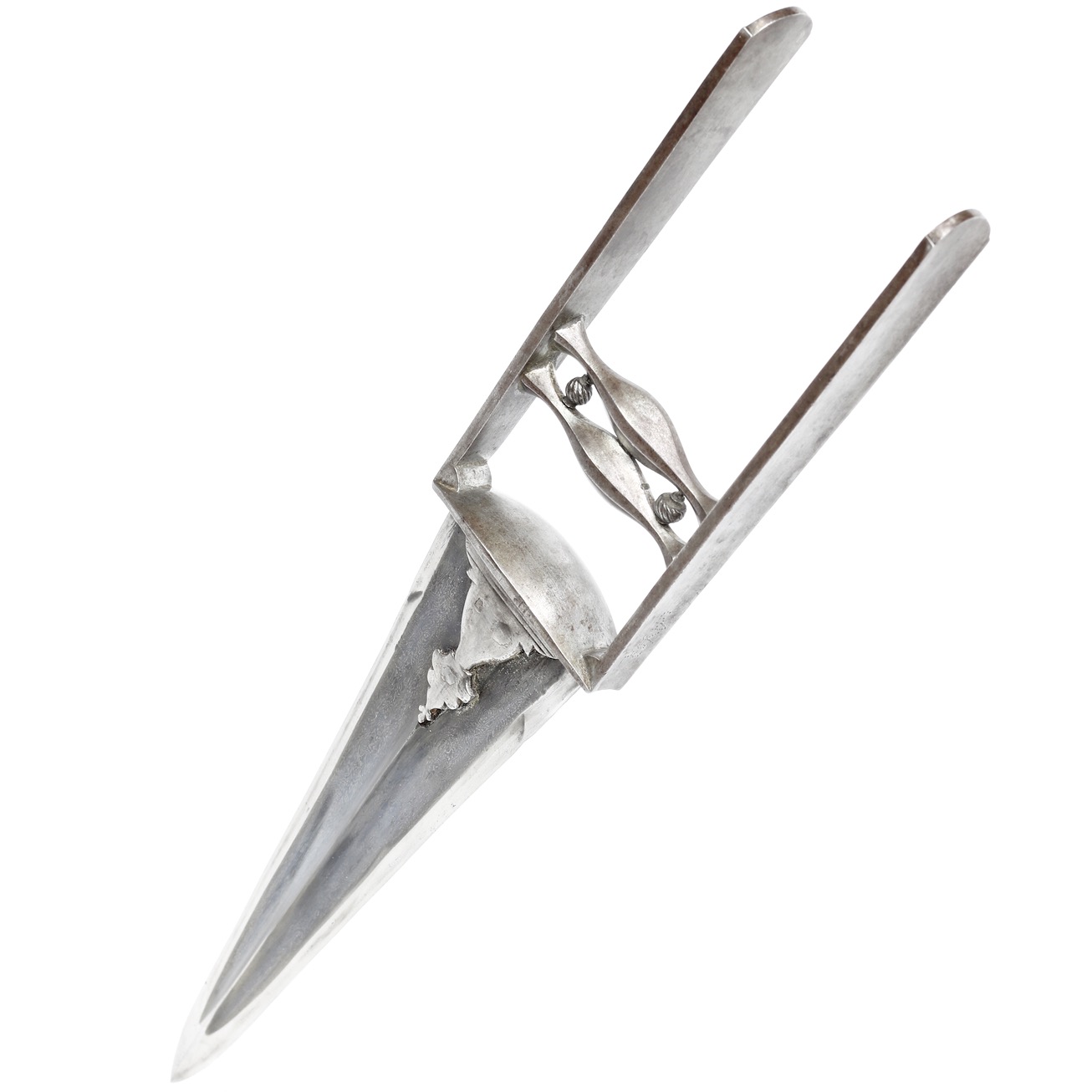
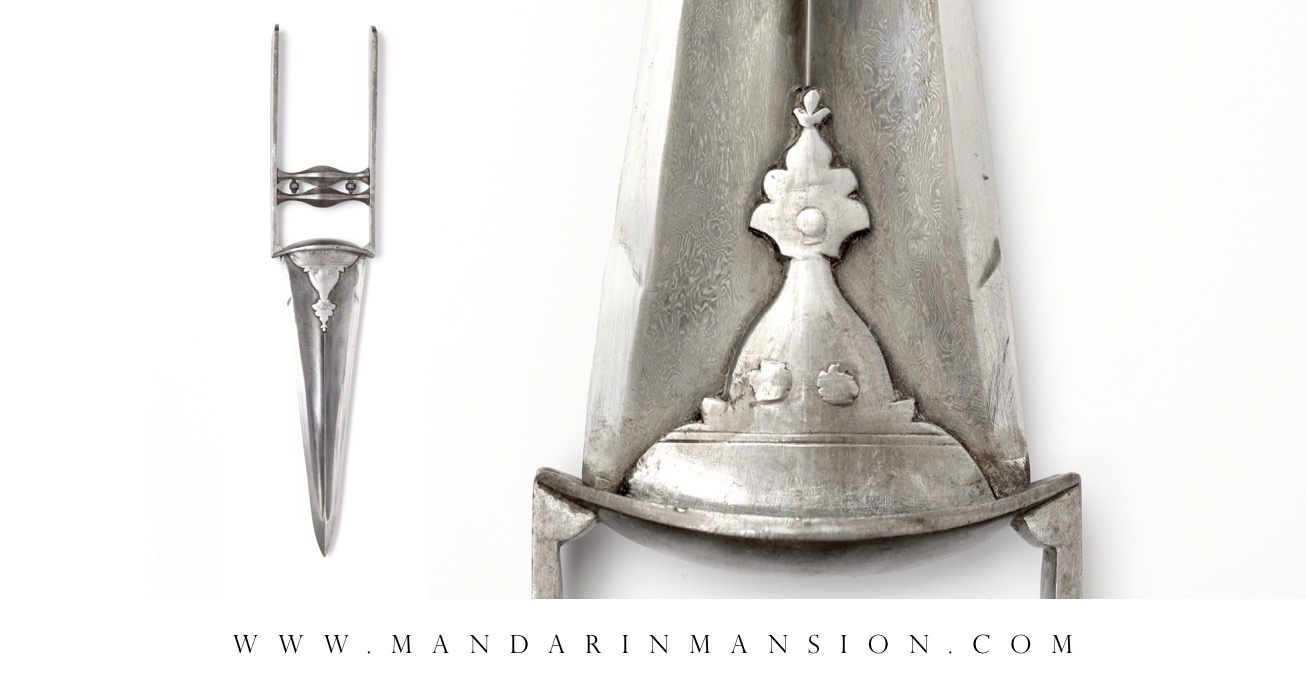
Somewhat worn but once very high-quality, with great sculptural qualities and remains of silver "true…

